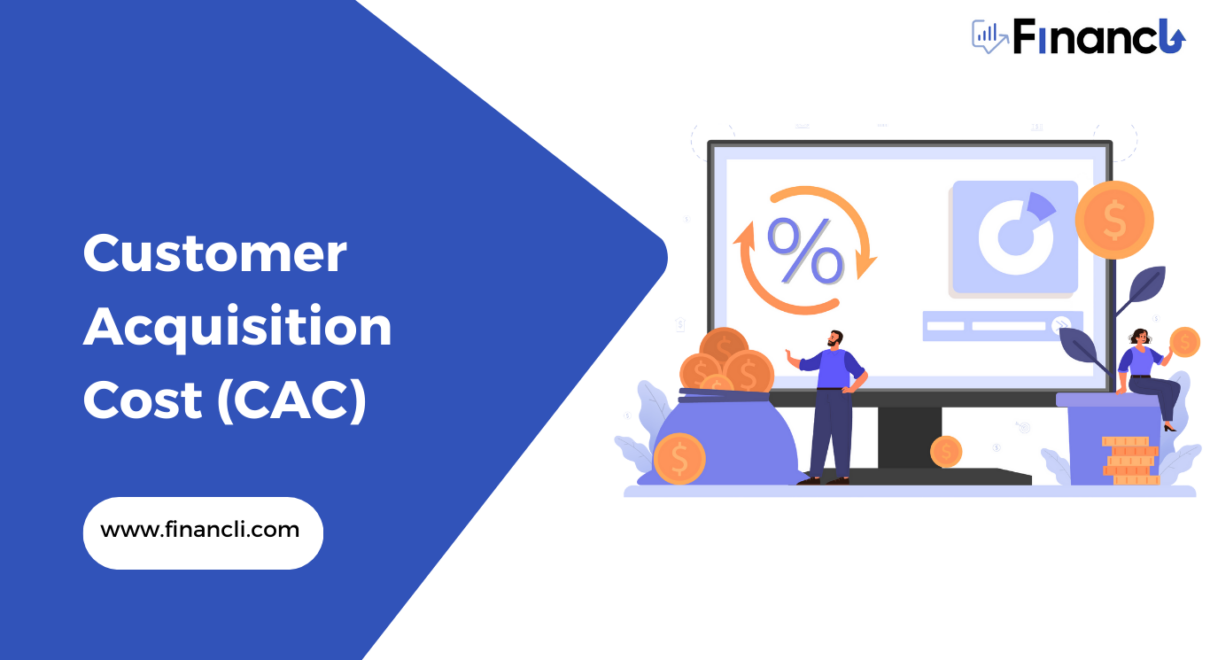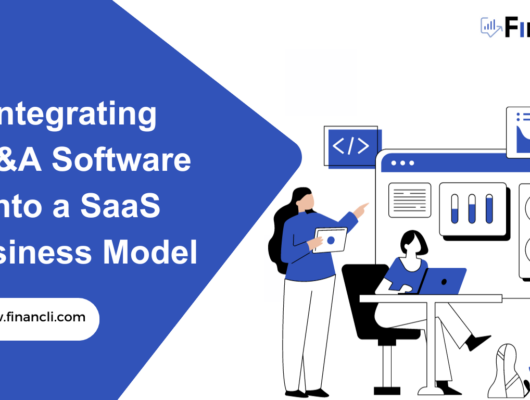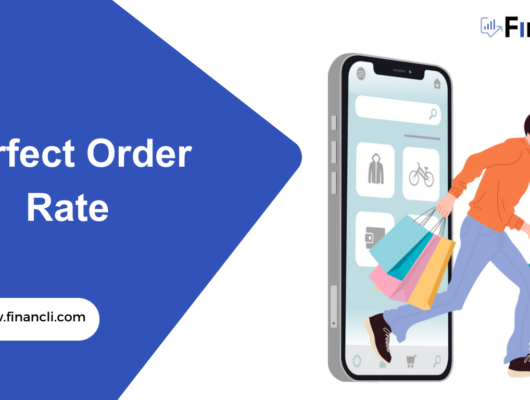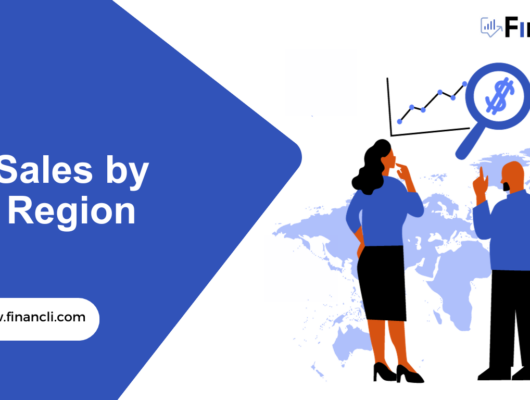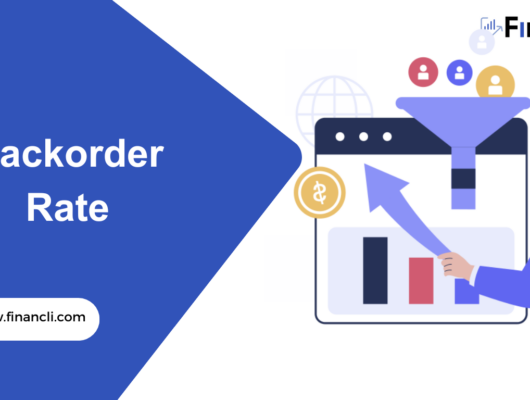Customer Acquisition Cost (CAC)
Customer Acquisition Cost (CAC) refers to the cost incurred by a business to acquire a new customer. It is a metric business use to evaluate the effectiveness and efficiency of their sales and marketing efforts. The CAC includes all costs associated with acquiring new customers, such as advertising, sales commissions, promotions, and other related expenses.
A high CAC can be a concern for businesses as it costs the company a lot of money to acquire new customers. To improve their profitability, businesses may look to reduce their CAC by optimizing their marketing strategies or targeting their marketing more effectively. Reducing CAC can help a business to increase its profits by acquiring new customers more efficiently.
The formula of Customer Acquisition Cost (CAC)
The formula for calculating Customer Acquisition Cost (CAC) is as follows:
CAC = Total sales and marketing costs / Number of new customers acquired
This formula takes into account all costs associated with sales and marketing efforts, such as advertising, promotions, sales commissions, and any other expenses incurred in acquiring new customers. Then, the total sales and marketing costs are divided by the number of new customers acquired over a given period of time to determine the CAC.
For example, if a business spent $10,000 on sales and marketing efforts in a month and acquired 100 new customers during that same month, the CAC would be $100:
CAC = $10,000 / 100 = $100
This means that, on average, the business spent $100 to acquire each new customer during that month. By tracking the CAC over time, companies can evaluate the effectiveness of their sales and marketing efforts and make adjustments as needed to improve their profitability.
Ideal Customer Acquisition Cost (CAC) in SaaS
The ideal Customer Acquisition Cost (CAC) for SaaS companies varies depending on the company’s business model, pricing strategy, and target market. However, in general, a lower CAC is preferred as it means that the business is acquiring new customers at a lower cost, which can lead to higher profitability.

For most SaaS companies, an ideal CAC is typically less than the average revenue per customer in the first year. This is because it takes time for the revenue generated by a new customer to cover the cost of acquisition. Ideally, a customer should generate more revenue over time than the cost of acquiring them.
For example, suppose a SaaS company has an average revenue per customer of $1,000 in the first year and a CAC of $500. In that case, the company can recoup the acquisition cost within the first year, which is generally acceptable. However, if the CAC exceeds the revenue generated in the first year, it can be challenging for the company to profit from the new customer.
It’s worth noting that the ideal CAC for SaaS companies can vary widely depending on the company’s target market, pricing strategy, and business model. Additionally, it’s essential for companies to regularly track and analyze their CAC to ensure that they are acquiring new customers efficiently and effectively and make adjustments as needed to improve their profitability.
Importance of Customer Acquisition Cost (CAC) in SaaS

Customer Acquisition Cost (CAC) is a critical metric for Software as a Service (SaaS) companies, as it directly impacts the business’s profitability. Here are a few reasons why CAC is crucial for SaaS companies:
- Predictability: Tracking CAC helps SaaS companies to predict the cost of acquiring new customers, which can help to forecast future revenue and growth. By understanding the average cost of acquiring new customers, SaaS companies can forecast their future revenue more accurately and plan their growth strategies accordingly.
- Efficiency: SaaS companies can use CAC to evaluate the efficiency of their sales and marketing efforts. By analyzing CAC, companies can identify which channels and campaigns are most effective in acquiring new customers and adjust their marketing strategies to focus on the most efficient channels.
- Customer Lifetime Value (CLTV): CAC is also an important metric when calculating Customer Lifetime Value (CLTV), which refers to the total revenue customers expect to generate over their lifetime with the company. By comparing CAC to CLTV, companies can determine whether the cost of acquiring new customers is worth the investment and identify areas where they can improve their marketing strategies to increase profitability.
- Benchmarking: CAC can also be used to benchmark a SaaS company’s performance against industry standards. By comparing their CAC to that of other companies in their industry, SaaS companies can identify areas for improvement and optimize their sales and marketing strategies to remain competitive.
In summary, tracking CAC is crucial for SaaS companies to effectively manage their sales and marketing efforts, optimize customer acquisition strategies, and achieve sustainable growth and profitability.
How to Reduce Customer Acquisition Cost (CAC) in SaaS?
Reducing Customer Acquisition Cost (CAC) is essential for SaaS companies, as it can directly impact the profitability and long-term success of the business. Here are some strategies that SaaS companies can use to reduce their CAC:
- Refine your target audience: One way to reduce CAC is to focus your marketing efforts on a specific, well-defined target audience. By narrowing your focus to the most relevant and valuable prospects, you can reduce marketing waste and improve the efficiency of your acquisition efforts.
- Improve your website and landing pages: Optimizing your website, and landing pages can help to improve the user experience, increase engagement, and reduce bounce rates. In addition, by improving the conversion rate of your website and landing pages, you can acquire more customers without increasing your marketing spend.
- Leverage social media: Social media can be a cost-effective way to reach your target audience and generate leads. By identifying and engaging with your target audience on social media platforms, you can increase your visibility and attract new customers without incurring high costs.
- Offer referral programs: Referral programs can be an effective way to acquire new customers through word-of-mouth marketing. By incentivizing existing customers to refer new customers, you can reduce your CAC and improve the quality of your leads.
- Improve your onboarding process: By improving your onboarding process and reducing churn, you can increase the lifetime value of your customers and reduce the need to acquire new customers as frequently. In addition, this can help to reduce your CAC over time.
Reducing CAC is crucial for SaaS companies to improve profitability and achieve sustainable growth. They can reduce their CAC and acquire new customers more efficiently and effectively by refining their target audience, optimizing their website and landing pages, leveraging social media, offering referral programs, and improving their onboarding process.
SaaS Customer Acquisition Cost (CAC) Benchmarks
SaaS Customer Acquisition Cost (CAC) benchmarks can vary widely depending on the industry, business model, target market, and pricing strategy. However, here are some general benchmarks to consider:
- Industry benchmarks: According to a report by Openview Partners, the median CAC across SaaS companies is $1.18 for every $1 of first-year annual contract value (ACV). However, this varies significantly by industry, with CAC ranging from as low as $0.07 in the social media industry to as high as $2.33 in the ERP industry.
- Business model benchmarks: The CAC for a SaaS business model can also vary widely depending on whether the company focuses on enterprise or self-service customers. The CAC tends to be higher for enterprise customers due to the longer sales cycles and higher touch sales process. According to Openview Partners, the median CAC for enterprise customers is $1.14 for every $1 of first-year ACV, while the median CAC for self-service customers is $0.92 for every $1 of first-year ACV.
- Pricing strategy benchmarks: The pricing strategy can also impact the CAC, with companies that offer free trials or freemium models generally incurring higher CAC. According to a report by Hubspot, the average CAC for a free trial is $1,704, while the average CAC for a freemium model is $1,013.
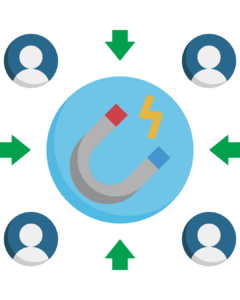
It’s important to note that these benchmarks are not one-size-fits-all, and each company should determine its own ideal CAC based on its unique business model, target market, and pricing strategy. Additionally, it’s essential for companies to regularly track and analyze their CAC to ensure that they are acquiring new customers efficiently and effectively.
Does CAC Increase Over Time?
Whether CAC increases over time depends on various factors specific to the business and its industry.
In some cases, CAC may increase over time as competition increases or as the business exhausts its low-hanging fruit of potential customers. For example, if a company operates in a crowded market with many competitors, acquiring new customers may become more expensive as the competition intensifies. Similarly, if a business has already reached the most interested and accessible potential customers, reaching new customers with less interest or motivation may become more expensive.
On the other hand, there are also cases where CAC can decrease over time as a business develops new marketing strategies or gains economies of scale. For example, a company that invests in marketing automation or better data analytics may be able to identify and target potential customers more effectively, reducing the overall cost of acquiring new customers. Additionally, as a business grows and expands, it may be able to negotiate better rates with suppliers or develop more efficient production processes, which can reduce the cost of acquiring customers.
Whether CAC increases or decreases over time will depend on the specific business, industry, and market conditions. Therefore, companies should monitor their CAC regularly and adjust their marketing and sales strategies as necessary to ensure they are acquiring new customers at a sustainable cost.
Examples of Companies with Notable CAC

Many companies across different industries are known for their high or notable customer acquisition costs (CAC). Here are a few examples:
- Uber: As a ride-hailing company, Uber has spent large amounts of money on marketing and incentives to acquire new customers. In 2018, Uber’s CAC was around $20 per new rider.
- Netflix: As a subscription-based streaming service, Netflix spends heavily on marketing and content creation to attract and retain subscribers. In 2020, Netflix’s CAC was around $100 per new subscriber.
- eHarmony: As a dating website, eHarmony has high customer acquisition costs due to the competitive nature of the dating industry. In 2018, eHarmony’s CAC was around $120 per new user.
- Groupon: As a daily deals website, Groupon relies heavily on marketing and promotions to attract new customers. In 2019, Groupon’s CAC was around $27 per new customer.
- Blue Apron: As a meal delivery service, Blue Apron has high customer acquisition costs due to the competitive nature of the food delivery industry. In 2017, Blue Apron’s CAC was around $460 per new customer.
It’s worth noting that customer acquisition costs can vary widely depending on a number of factors, including industry, target audience, marketing strategy, and more.

